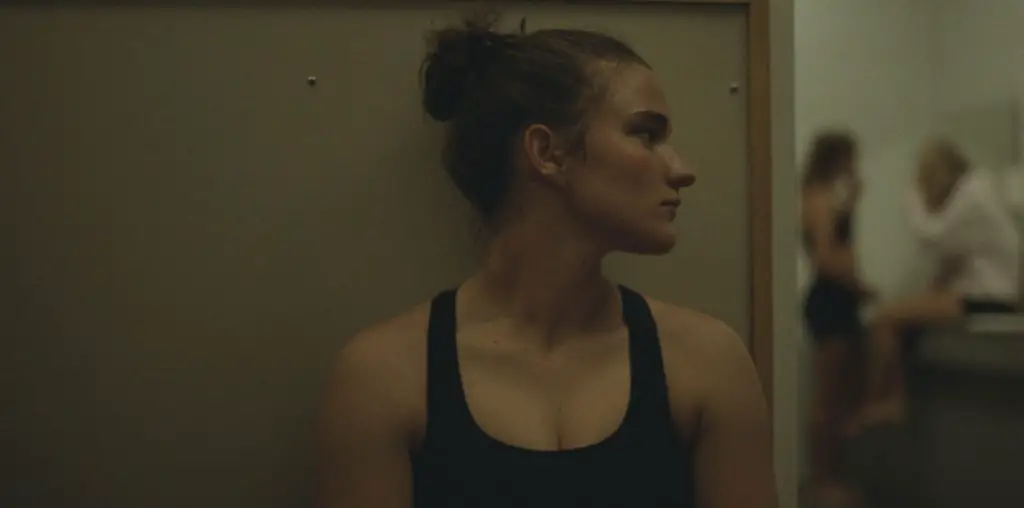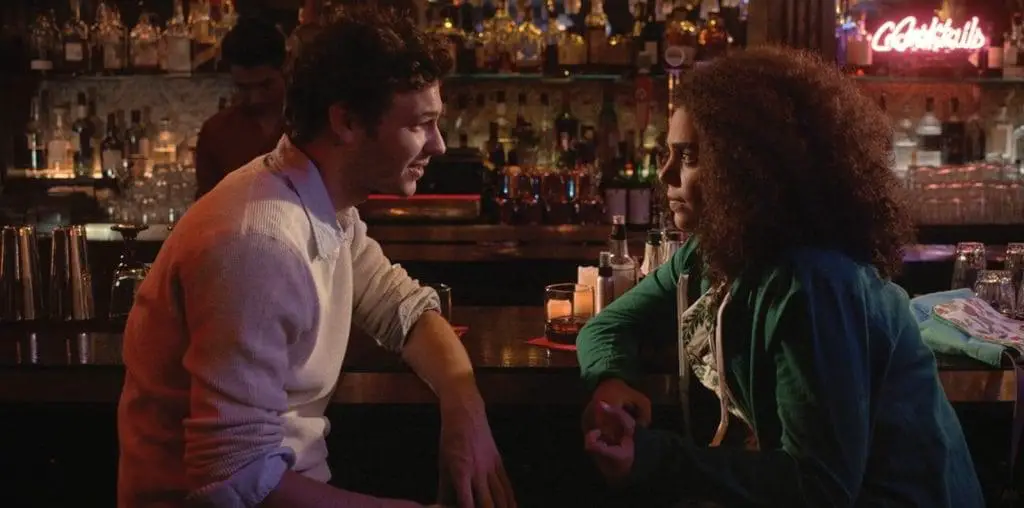
Say the name “Mae Murray” and most people would probably respond with confusion. But back in the late 1910s and 1920s, Mae Murray was among the world’s most recognized and beloved film performers. With her distinctive beauty – highlighted by her trademark “bee-sting” lipstick design – and extravagant acting style, Murray was an incandescent presence on the silent screen. Indeed, she lived a movie star life to its fullest, with a tumultuous off-screen existence that rivaled the flash and glamour of her roles.
But, almost abruptly, it all fell apart. A disastrous decision to walk out on her MGM contract at the peak of her popularity all but killed her movie career, while an unwise marriage to a phony Georgian prince redirected her life into an endless skein of legal and financial problems. Ten years after her most famous performance in the title role of Erich von Stroheim’s 1925 epic “The Merry Widow,” Murray was broke and unemployable. Until her death in 1965, she struggled with mental health issues and relied on the kindness of show business friends to rescue her from destitution.
Film historian Michael G. Ankerich recalls the rise and fall of this long-forgotten icon in his new book “Mae Murray: The Girl with the Bee-Stung Lips” (published by University Press of Kentucky). Film Threat spoke with Ankerich about this once-luminous star and her unique place in movie history.
What inspired you to write a book about Mae Murray?
Mae Murray has intrigued me since my fascination began with silent films in the 1970s. To me, she was everything a star from the 1920s was supposed to be: Extravagant, gorgeous, impossibly egotistical, not quite human, but not quite God.
I had intended to devote a chapter to Mae in “Dangerous Curves Atop Hollywood Heels,” the book immediately preceding “Mae Murray.” After solving the mystery of her birth and getting cooperation from her son and nephew, I knew the time had come for a full-length biography and study of this icon of the 1920s.
Her life has everything that makes for a juicy novel. In fact, I have been told that Mae Murray reads like a novel. One doesn’t have to be a film fan to be pulled into her story. You only have to be open to a rollercoaster ride through an extraordinary life of someone who came from nothing, made something of herself on the stage and screen, and lost it all through poor choices and bad luck.
Mae’s was a story that waited for decades to be told. After writing her story, I’m still haunted by this one question: was she Norma Desmond, Baby Jane Hudson, or a combination of the two?
What films are considered to be Mae Murray’s finest? And are these films easily accessible for film lovers to view today?
In spite of the legendary battles she fought with director Erich von Stroheim on “The Merry Widow” set, that film turned out to be Mae’s finest screen performance. It is the most available of her surviving films.
Two other Mae Murray films, which are available, offer glimpses into her acting ability. “A Mormon Maid” gives her a chance to display her dramatic ability and “The Delicious Little Devil” shows her comedic side.
I would also recommend two of her talkies: “Bachelor Apartment” and “High Stakes.” They are critical viewing for anyone interested in seeing a star in twilight.
After reading countless reviews of her other 35-plus films, I sense that some of her best performances have disintegrated into dust or are waiting for rediscovery at the bottom of swimming pools or in private collections.
Why didn’t Mae Murray make a smooth transition from silent movies to sound films? And was there ever the possibility that she could have enjoyed a late-life comeback – if not in film, then maybe on stage, radio or TV?
A number of factors contributed to the collapse of Mae’s film career in the early 1930s. From a broad perspective, Mae had simply burned too many bridges to ever hope for a smooth transition.
Louis B. Mayer, her boss at MGM, wielded tremendous power. When she walked out of her contract after “The Merry Widow,” he vowed to make her professional life miserable. He stuck to his work, threatening anyone who hired her.
At the dawn of sound, Tiffany Productions and Mae joined forces to recreate some of her most successful silents. When the first of them, “Peacock Alley,” was released in 1929, Mayer approached the Tiffany brass and assured them their financial backing would dry up if they used Mae in future films.
Mae’s old friend, Lowell Sherman, defied Mayer’s threats and hired Mae for what turned out to be her final films: “Bachelor Apartment” and “High Stakes.” Mayer spewed threats at Sherman. Who knows what happened behind the scenes, but Sherman, who vowed to stand behind Mae, never used her in another picture.
Mae’s frequent lawsuits, particularly the one against Tiffany after the studio voided her contract, did nothing to help her chances for a successful career in talkies.
There was nothing wrong with Mae’s voice. Critics pronounced hers a successful transition to talkies. Her voice was almost childlike, a bit like Billie Burke. I can see where she might have moved into quality character roles had she beat Mayer’s curse and allowed herself to play more mature roles: mothers, society matrons, for example. Unfortunately, she saw herself in the same roles she’d been playing for over 15 years: youthful chorus girls and Broadway ingénues. It became increasing hard for Mae, approaching fifty, to continue playing dancers in their twenties.
Later in life, Mae did television. Those were limited to guest appearances. When she was really down on her luck, she had friends who offered her stage work. She was insulted and threw up to any potential employer that she had once made $7,500 a week in films.
From what I can determine, pride and the inflated enchantment she had for herself convinced her that occasionally sleeping on park benches and depending on handouts from friends were superior to earning a modest living on a $350 a week job in summer stock.
A great deal of Mae Murray’s troubled life in the late 1930s and 1940s seems to mirror the emotionally frayed behavior of the Norma Desmond character in “Sunset Boulevard.” Did Billy Wilder model Norma Desmond on Mae Murray? And, for that matter, was she ever considered for a role in that film?
I could find no concrete verification that Wilder patterned Norma Desmond after Mae Murray. People who knew her noted the similarities. David Hamilton, brother of actor George Hamilton, said that, while she might not have been the model for Norma Desmond, she could have been. She was someone, he said, who was transfixed in the 1920s.
Louise Brooks saw similarities between the two in the film’s scenes with Desmond (Gloria Swanson) and Cecil B. DeMille. George Hamilton, also interviewed for the book, said Desmond was hopelessly lost in the past. He felt that Mae might have been playing a role she felt obliged to play, but didn’t necessarily believe herself.
I could also find no reference that Mae was ever asked to play one of the “wax works” in Wilder’s film, nor could I tie Mae to the quote often attributed to her after she saw the film: “None of us floosies were ever that nuts.” She was very ladylike and never used that type of vocabulary.
What was the most surprising thing that you learned about Mae Murray in your research on her life?
In addition to my discovery of the facts surrounding her birth and her immediate family, I was surprised to learn that there was much more to Mae Murray than a series a poses and temperamental outbursts.
I was not expecting to discover an actress who took her work at the studio so seriously that she became involved in every aspect of the film. She wrote scenarios, planned her wardrobe, dealt with financial backers, confronted critics when she felt they were wrong, and stood against censorship of any kind in the film industry.
Mae said that she never fought casually, but always for the good of the picture she was making. She fought to protect what she felt she had been given by the movie-going public, to whom she always felt indebted.


